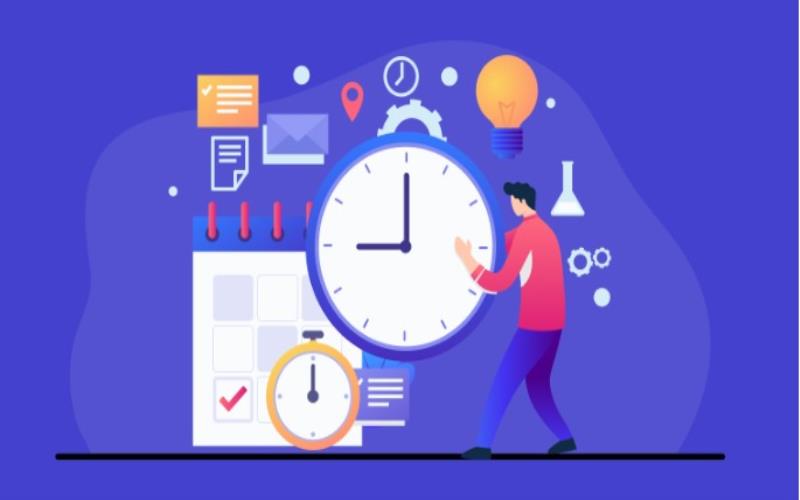Introduction
In the ever-evolving landscape of modern business, Employee Monitoring Software, often referred to as employee tracker, stands as a cornerstone for success. This article delves into a comprehensive exploration, discussing key features, benefits, compliance considerations, real-world applications, software selection guidance, implementation best practices, and future trends of Employee Monitoring Software.
Understanding Employee Monitoring Software
Delve into the core of Employee Monitoring Software, understanding its role and significance in contemporary workplaces.
Defining Employee Monitoring Software
Employee Monitoring Software refers to advanced tools designed to track and analyze employee activities during work hours, commonly known as employee tracker It includes features aimed at improving productivity, ensuring security, and maintaining compliance with organizational policies.
Significance in Enhancing Productivity, Security, and Compliance
This software significantly enhances productivity by providing insights into time utilization, identifying bottlenecks, and streamlining workflows. It also contributes to improved security by monitoring activities that may pose a threat to data integrity. Moreover, it aids in compliance with regulations, ensuring consistent adherence to organizational policies.
Key Features Explored
To harness the full potential of Employee Monitoring Software, let’s delve into its key features.
Time Tracking Mastery
Efficient time tracking functionality, including productive time tracking, allows employers to monitor how employees allocate their working hours. This aids in workload distribution and project management.
Screen Monitoring for Transparency
Screen monitoring provides real-time visibility into employees’ computer screens, fostering accountability and ensuring that work-related tasks take precedence.
Activity Logging and Reporting Insights
Detailed activity logging and reporting features offer comprehensive insights into individual and team performance, enabling data-driven decision-making by management.
Leveraging Benefits
The adoption of Employee Monitoring Software brings forth a multitude of benefits for both employers and employees.
Boosting Productivity
By fostering accountability and optimizing workflows, Employee Monitoring Software, or employee tracker, contributes to a substantial increase in overall productivity.
Cost-Effective Operations
Efficient resource allocation and improved task prioritization result in reduced operational costs, ensuring a more streamlined and cost-effective operation.
Navigating Remote Work Challenges
In the era of remote work, Employee Monitoring Software becomes indispensable, offering insights into remote team activities and ensuring seamless collaboration.
Addressing Compliance and Privacy
Navigating the landscape of compliance and privacy is crucial for organizations leveraging Employee Monitoring Software.
Ethical and Legal Use
Employee Monitoring Software can be used ethically and legally by transparently communicating its use to employees. This ensures alignment with data protection laws and builds trust within the workforce.
Real-World Applications
Explore real-world examples illustrating the diverse applications of Employee Monitoring Software across different industries.
Empowering Remote Work Management
In the era of remote work, Employee Monitoring Software facilitates efficient management of remote teams, ensuring tasks are completed on time.
Streamlining Project Tracking
For project-based businesses, the software aids in project tracking by providing insights into task progress, time allocation, and potential roadblocks.
Achieving Time Optimization
Optimizing work schedules and identifying time-wasting activities contribute to overall time optimization, driving increased efficiency.
Choosing the Right Software
Selecting the most suitable Employee Monitoring Software requires careful consideration of various factors.
Scalability Considerations
Evaluate the software’s scalability to ensure it can accommodate the organization’s growth and evolving needs.
Integration Compatibility
Consider the compatibility of the software with other tools and systems used within the organization to ensure seamless integration.
User-Friendly Interface
Choose software with a user-friendly interface, facilitating easy adoption and ensuring a positive user experience.
Successful Implementation Strategies
Ensure successful implementation of Employee Monitoring Software by adhering to best practices.
Transparent Communication with Employees
Transparently communicate the implementation of Employee Monitoring Software to foster trust and address any concerns among employees.
Current Trends and Future Outlook
Staying abreast of current trends and emerging technologies is crucial for organizations utilizing Employee Monitoring Software.
Evolving Technological Landscape
The software is evolving to meet changing work environments, incorporating advancements such as AI-driven analytics and enhanced remote monitoring capabilities.
Conclusion
In conclusion, Employee Monitoring Software, often referred to as an employee tracker and a productivity tracking tool, serves as a transformative tool for workforce management. By understanding its features, benefits, and best practices, organizations can navigate the evolving landscape of workforce management successfully.
FAQs: Common Queries Unveiled
Can Employee Monitoring Software be utilized for remote teams?
Certainly! Employee Monitoring Software, including employee tracker solutions, is a valuable tool for managing remote teams, providing insights into activities and ensuring seamless collaboration.
How does Employee Monitoring Software enhance organizational security?
Employee Monitoring Software enhances security by monitoring activities that may pose a threat to data integrity, such as unauthorized access or suspicious behavior.
Is the utilization of Employee Monitoring Software legal?
Yes, the use of Employee Monitoring Software, or employee tracker is legal, provided organizations adhere to data protection laws and communicate its use transparently to employees.
What factors should be considered when choosing Employee Monitoring Software?
Factors like scalability, integrations, and user-friendliness are crucial when selecting Employee Monitoring Software to ensure it aligns with organizational needs.
How can Employee Monitoring Software improve project tracking?
By providing insights into task progress, time allocation, and potential roadblocks, Employee Monitoring Software streamlines project tracking for businesses with project-based operations.
What is the future outlook for Employee Monitoring Software?
The future of Employee Monitoring Software involves advancements in AI-driven analytics and enhanced remote monitoring capabilities to meet the evolving needs of modern workplaces.


